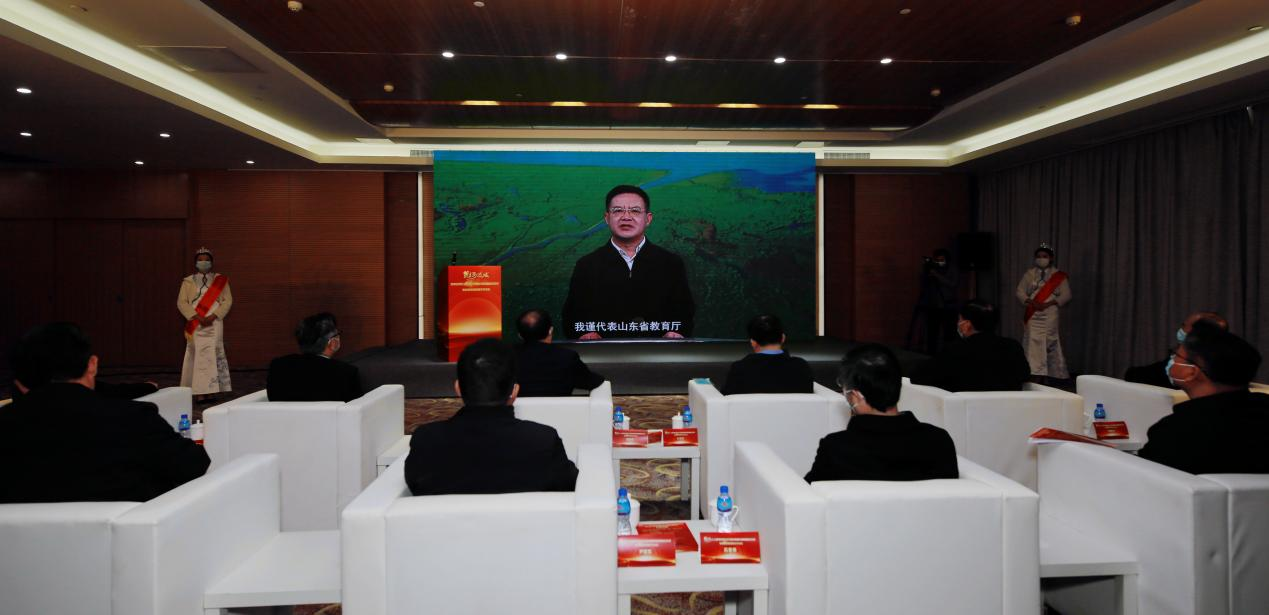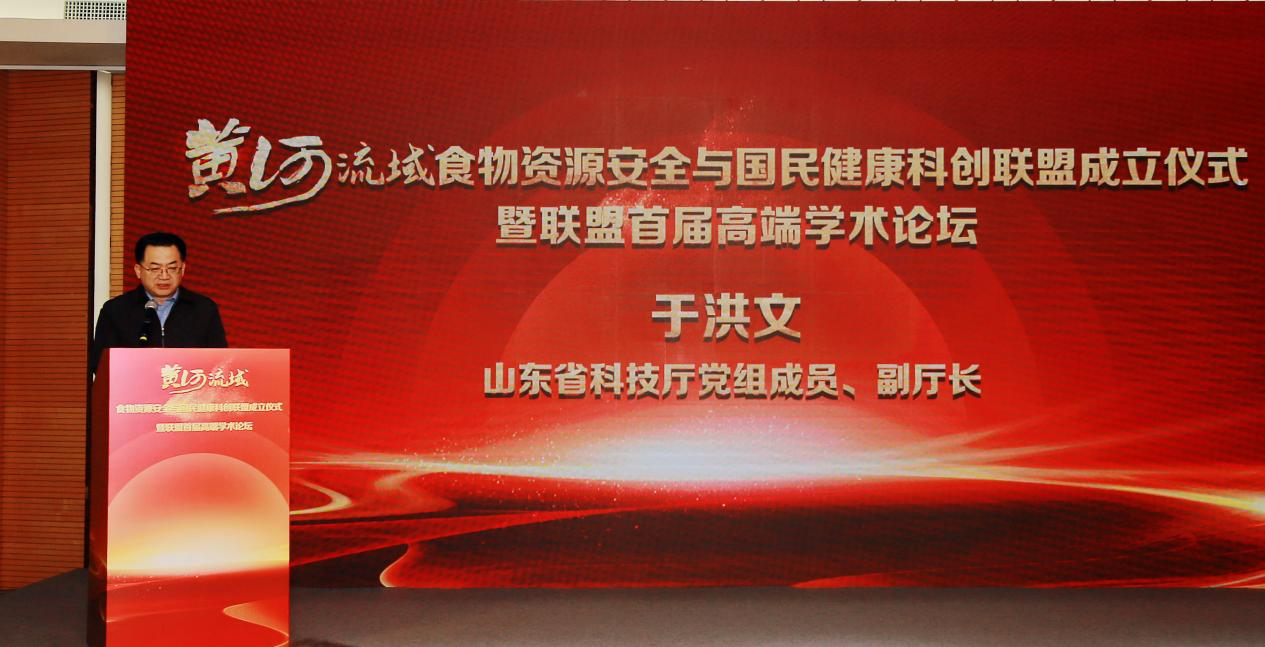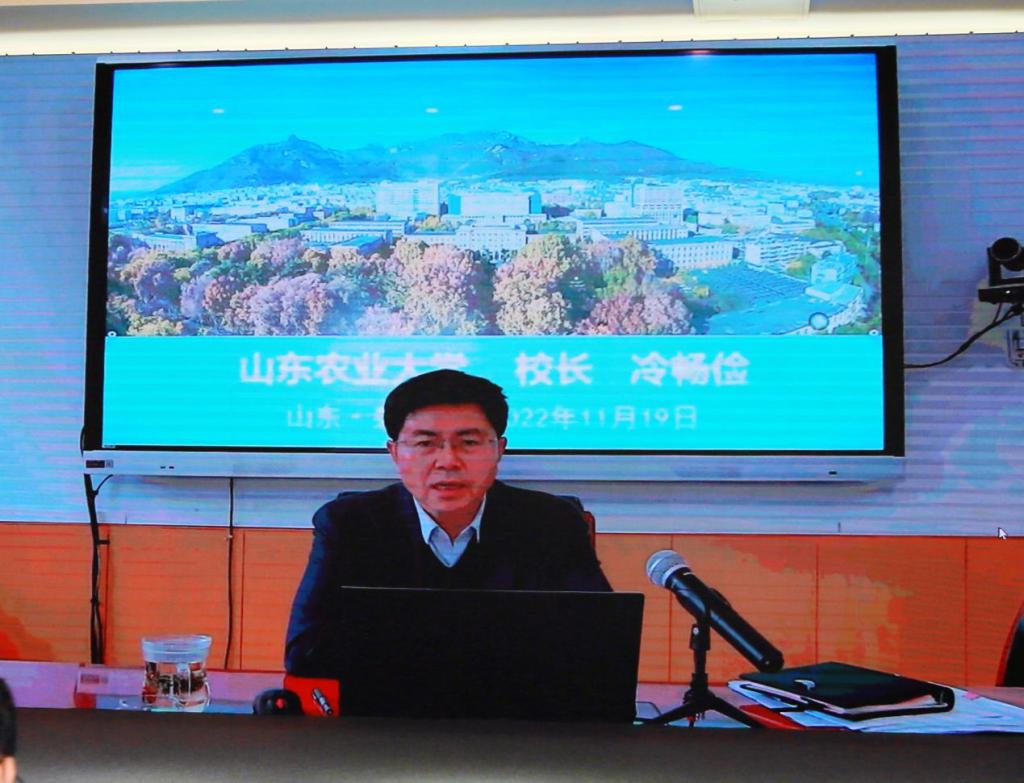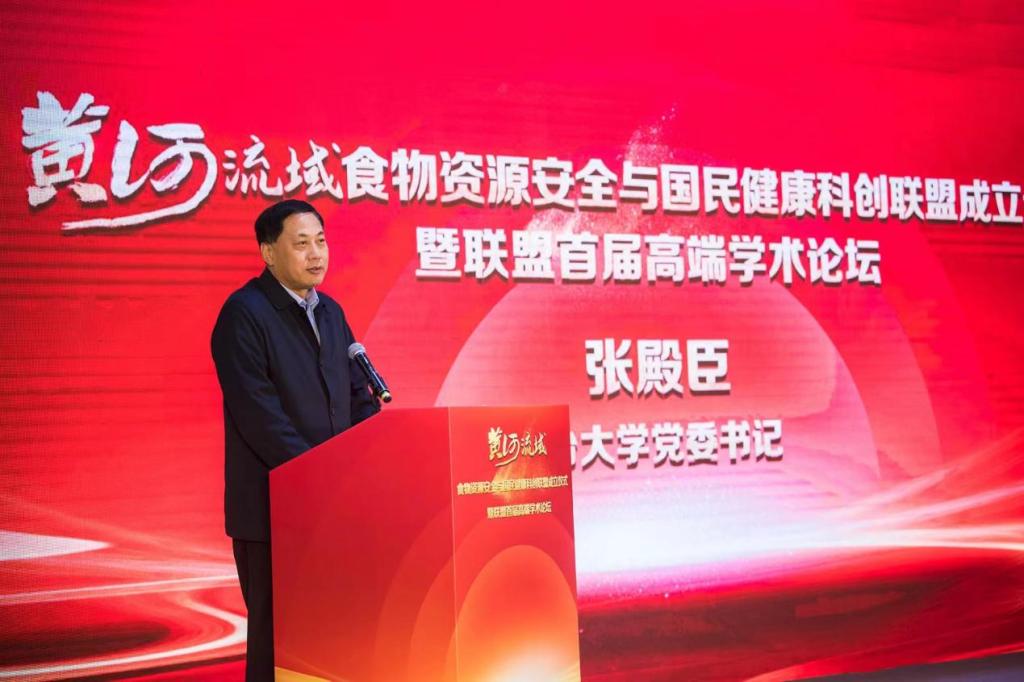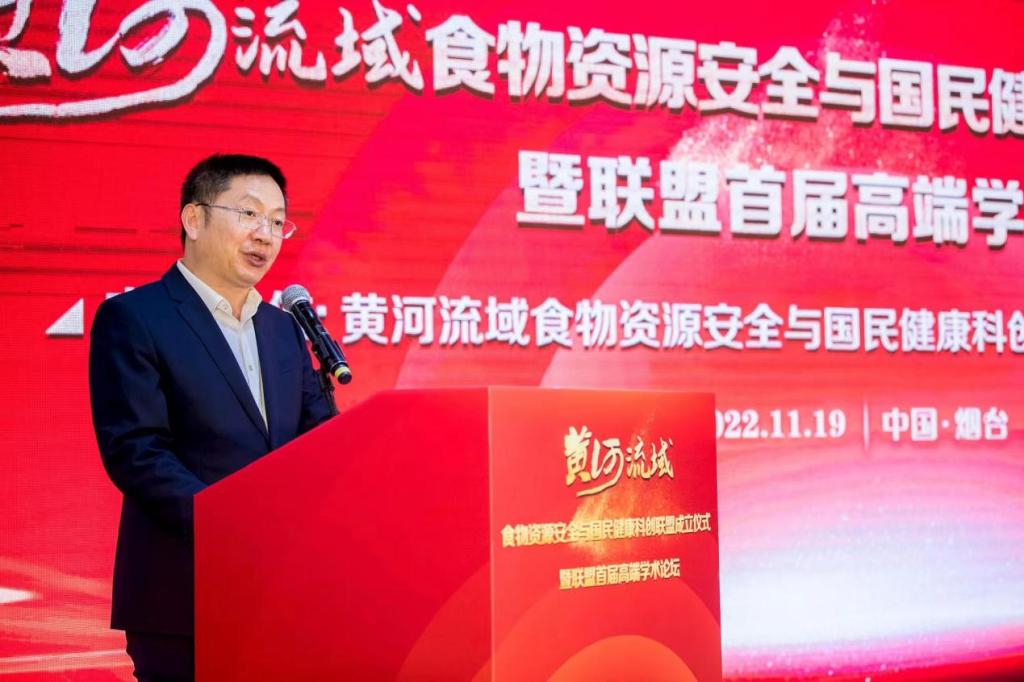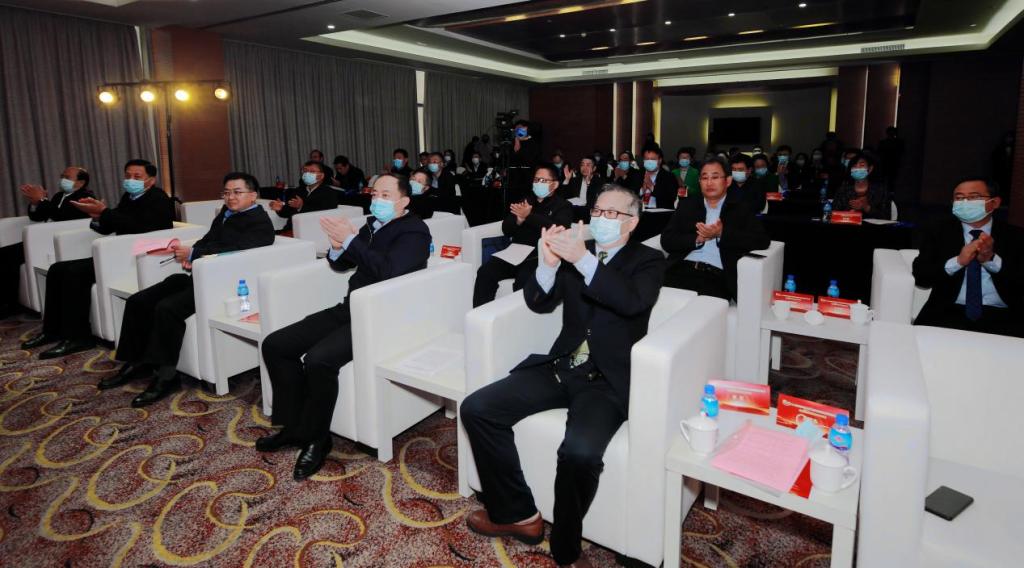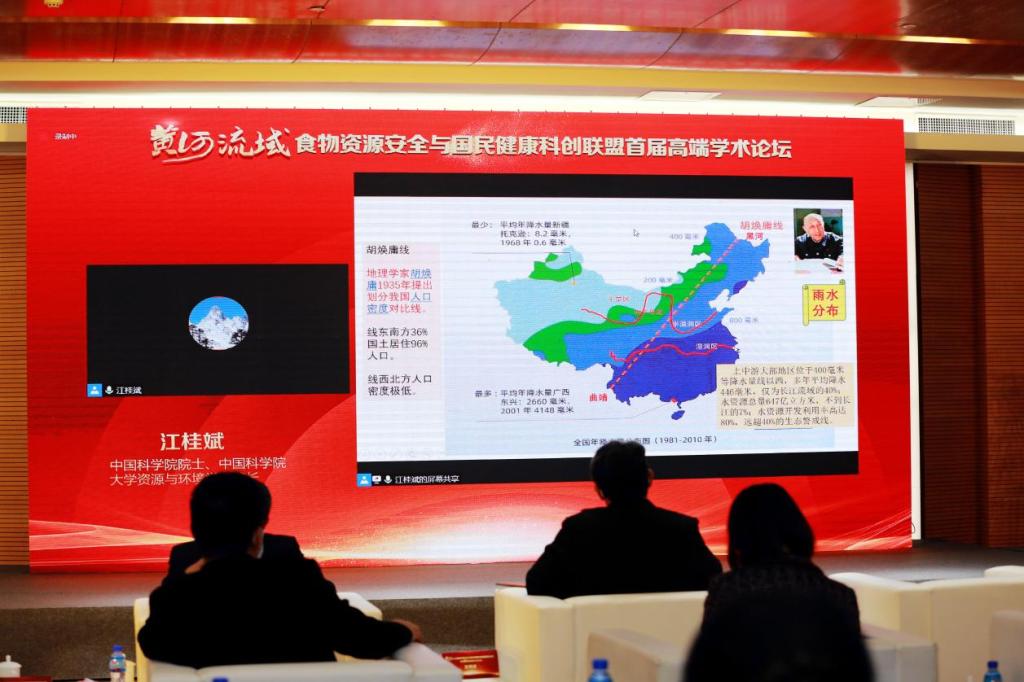Yantai University (China) The Yellow River Basin Food Resource Safety and National Health Science Innovation Alliance, jointly initiated by Yantai University and Northwest Institute of Plateau Biology, Chinese Academy of Sciences, was officially established
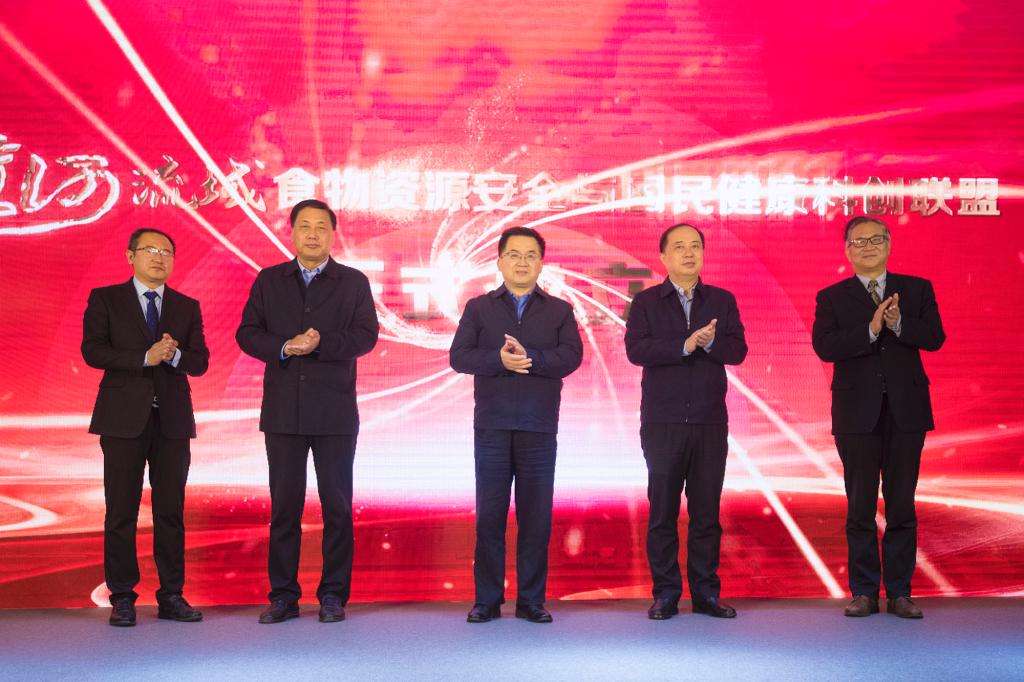
On the morning of Nov. 19, Yantai University and Northwest Institute of Plateau Biology, Chinese Academy of Sciences jointly initiated the establishment ceremony of the Yellow River Basin Food Resource Safety and National Health Science Innovation Alliance and the first high-end academic forum of the alliance was held in Yantai. Bai Hao, Deputy Secretary of the Education Working Committee of Shandong Provincial Committee, Deputy Secretary of the Party Leading Group and Deputy Director of the Department of Education of Shandong Province, Yu Hongwen, member of the Party Leading Group and Deputy Director of the Department of Science and Technology of Shandong Province, Han Yaodong, member of the Party Leading Group and Deputy Mayor of Yantai Municipal Government, and Zhang Dianchen, Secretary of the Party Committee of Yantai University attended the meeting and delivered speeches. Chen Shilong, director of Northwest Institute of Plateau Biology, Chinese Academy of Sciences, and Leng Changjian, president of Shandong Agricultural University, delivered speeches as representatives of the alliance. The establishment ceremony and forum were presided over by Duan Peiyong, Deputy Party Secretary and President of Yantai University, and Hao Shuguang, Standing Committee member and Vice President of Yantai University Party Committee.
The investigation shows that in the past half a century, the change of national diet structure and the reduction of food fat have led to a high incidence of chronic diseases, which aggravated the imbalance between food supply and demand and the structural contradiction and endangered the natural ecology.
How to solve the major strategic problems of ecological security, food security and national health in our current development? The Yellow River Basin Food Resource Safety and National Health Science and Innovation Alliance was launched. It is the first science and innovation alliance in China focusing on food resource safety and national health in the Yellow River Basin. It was jointly initiated by Yantai University and Northwest Institute of Plateau Biology, Chinese Academy of Sciences. It has brought together 36 institutions of higher learning, research institutes and industrial enterprises from the nine provinces along the Yellow River, including relevant institutes of the Chinese Academy of Sciences, Lanzhou University, Sichuan University, Northwest A&F University, Ocean University of China and so on.
The alliance aims to build a scientific and technological innovation community, strengthen inter-regional cooperation, promote the construction of scientific and technological innovation platform and resource sharing, and improve the ability to serve society. It studies the coexistence of traditional and modern agriculture and food industry in the Yellow River Basin with the “Big food concept”, and reveals the mechanism of the correlation between food resource security and national health. We will carry out joint research on the comprehensive development and sustainable utilization of food resources in the Yellow River Basin, serve the national health, help reduce the structural loss of food, and realize ecological protection priority, green and healthy development.
As a university assisted by Peking University and Tsinghua University, Yantai University is a high-level university with “strong characteristics” in Shandong Province, with high development level and strong comprehensive educational strength. As early as 15 years ago, Yantai University and the Northwest Institute of Plateau Biology of the Chinese Academy of Sciences have carried out relevant scientific research cooperation, which has produced a large number of scientific achievements. Today, with the Yellow River Basin as a model, the Alliance provides traditional and future-oriented scientific support for the establishment of modern, efficient and sustainable agriculture, green food industry and scientific dietary guidelines suitable for the health needs of Chinese people by comparing and studying the differences and related mechanisms of agriculture, food resource structure and chronic disease occurrence in the east and west of the upper and lower reaches of the Yellow River. The response to the overall development of the country has extensive and comprehensive demonstration effect.
In the future, all alliance units will focus on food resource security and national health in the Yellow River Basin, jointly carry out key technology research, sharing and co-construction of major scientific and technological platform resources, and transfer and transformation of important scientific and technological achievements, and strive to create a new pattern of scientific and technological innovation cooperation and coordinated development in the Yellow River Basin, and make new and greater contributions to the ecological protection and high-quality development of the Yellow River Basin.
After the founding ceremony of the Alliance, the first high-end academic Forum of the Alliance was held. Jiang Guibin, Academician of the Chinese Academy of Sciences and Professor of the University of the Chinese Academy of Sciences; Jiang Zhengqiang, Professor of China Agricultural University and winner of the National Outstanding Youth Fund; Sun Junmao, Party Secretary of the Logistics Service Center of the Chinese Academy of Agricultural Sciences and Chief Scientist of the Food Nutrition Strategy and Policy Innovation Team; Kang Jiuhong, Professor of Tongji University and winner of the National Outstanding Youth Fund; John R.Spakman, adjunct Professor of Yantai University, Fellow of the Royal Society, Foreign academician of the Chinese Academy of Sciences and foreign academician of the American Academy of Sciences, shared the online keynote report in turn.
The activity was carried out simultaneously online and offline, and nearly 100 people, including the main leaders of the member units of the Science and Technology Innovation Alliance, experts and scholars, participated in the activity.

